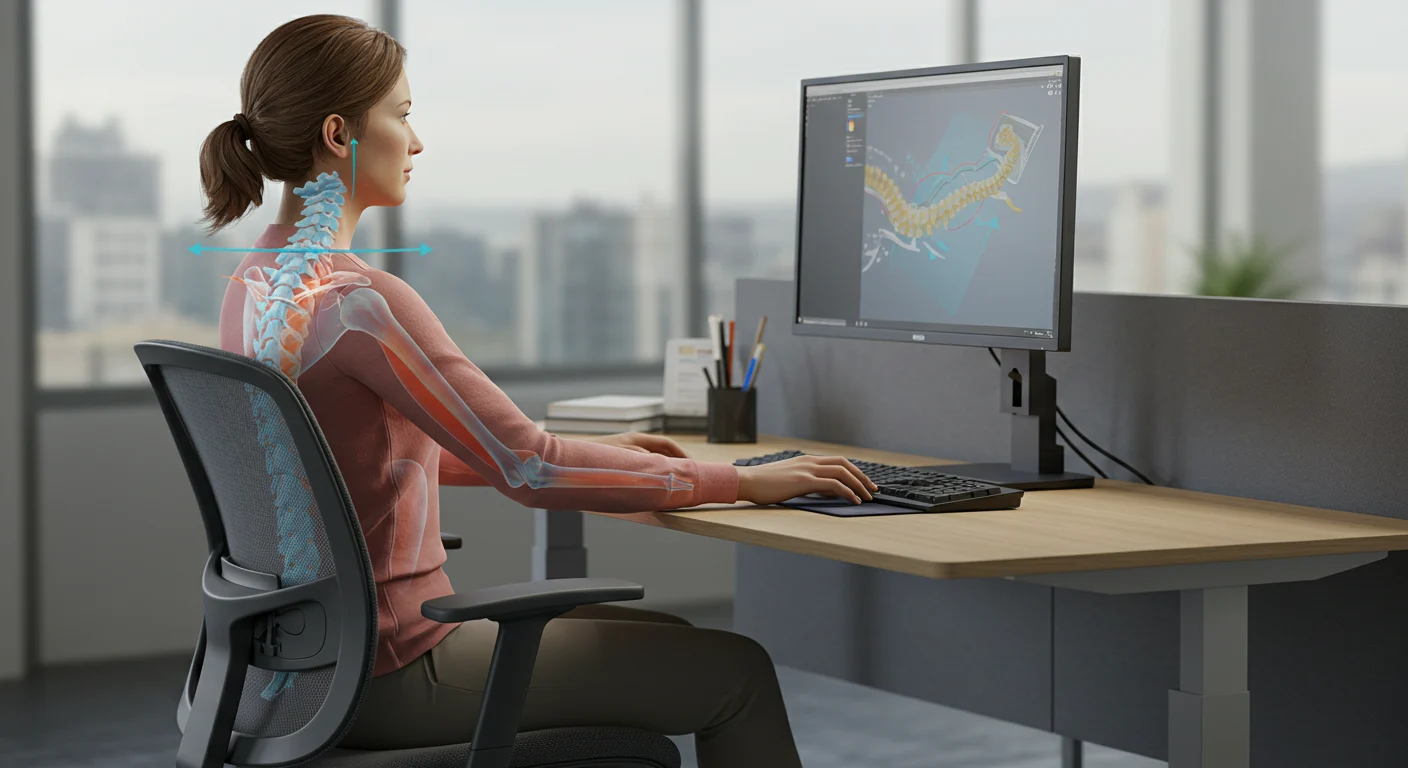Straighten Up
Have you ever caught a glimpse of yourself in a storefront window and been shocked by your hunched silhouette? I certainly have! As both a massage therapist and someone who’s battled posture issues personally, I’ve come to realize that posture impacts far more than just how we look in photos. It’s a fundamental aspect of our health that influences everything from our physical comfort to our emotional wellbeing.
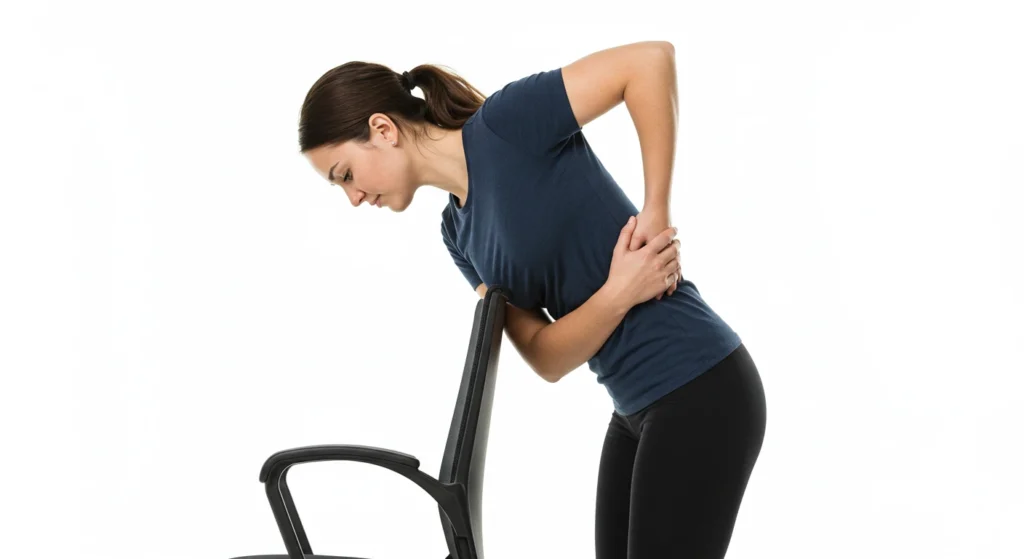
After years of helping clients transform their lives through better alignment and experiencing my own posture journey, I can tell you with absolute certainty: posture matters significantly more than most people realize.
What Exactly Is Good Posture?
Before diving into the benefits, let’s clarify what good posture actually means. It’s not about rigidly standing at attention like a soldier! Good posture is the proper alignment of your body that puts the least strain on supporting muscles and ligaments during movement and weight-bearing activities.
- Perimenopause Massage Protocols: Hormone-Balancing Touch Techniques for Women 40+
- Crystal Massage Therapy Certification: Market Demand and Professional Integration
- Sound Healing During Massage: Frequency Therapy Benefits and Equipment Guide
- Reiki-Infused Massage Therapy: The New Wellness Trend Taking Over Spas
- TRICARE Massage Therapy Coverage for Military Families: What You Need to Know
When I evaluate clients’ posture, I look for natural spine curvatures maintained with minimal effort. Your body should feel balanced, not strained-imagine a string pulling upward from the top of your head while your shoulders relax downward.
For standing posture, I recommend:
- Keeping your head balanced directly over your shoulders, not forward
- Drawing your shoulders slightly back without pinching shoulder blades
- Maintaining a neutral spine with natural curves
- Distributing weight evenly between both feet
- Keeping knees slightly bent, not locked
When sitting (which many of us do far too much!), focus on:
- Keeping your feet flat on the floor
- Maintaining a small gap between the back of your knees and the chair
- Supporting your lower back with a small cushion if needed
- Positioning your screen at eye level
- Keeping shoulders relaxed, not hunched forward
I once had a client who called her improved posture her “confidence posture”-and that perfectly captures the multidimensional benefits good alignment brings!
The Physical Impact of Good Posture
Less Pain, More Gain
After working with thousands of clients over my career, I’ve seen firsthand how proper alignment can dramatically reduce pain. When your body maintains correct alignment, weight distributes evenly across your skeletal structure, significantly reducing strain on muscles and joints.
One client, Sarah, came to me with chronic neck pain from years of looking down at her phone. After just six weeks of posture correction exercises and regular massage therapy for neck pain, she reported an 80% reduction in her discomfort. This isn’t unusual-I see these transformations regularly.
Poor posture creates a cascade of compensations throughout your body. That forward head position (what I call “text neck”) places enormous stress on your cervical spine-about 10 additional pounds of pressure for every inch your head moves forward! No wonder so many people suffer from tension headaches and neck pain.
Breathe Better, Live Better
Here’s something fascinating I’ve observed in my practice: when clients improve their posture, their breathing transforms. Slouching compresses your lungs and diaphragm, restricting your breathing capacity. When you sit or stand with proper alignment, your lungs have room to fully expand.
Try this quick experiment: slouch forward, round your shoulders, and try to take a deep breath. Now, sit up tall with shoulders back and breathe deeply. Feel the difference? That’s not just comfort-it’s improved oxygen intake affecting every cell in your body!
Better breathing means:
- More oxygen to your brain for improved cognitive function
- Enhanced energy levels throughout the day
- Improved endurance during physical activities
- Better stress management through deeper breathing
Balance and Stability
I work with many older clients concerned about falls, and posture is almost always a factor. Good alignment centers your weight properly over your base of support, creating stability that prevents stumbles and falls.
Last year, I worked with Harold, a 78-year-old who had begun to experience balance issues. After incorporating posture exercises into his routine and receiving regular myofascial release therapy to address decades of compensations, his balance improved dramatically. His daughter recently told me he’s back to gardening without fear of falling-a huge victory!

The Psychological Dimension: How Posture Affects Your Mind
The Mind-Body Connection
One of the most fascinating aspects of my work has been observing how posture directly influences mood and emotional states. Research confirms what I’ve seen clinically: upright posture promotes positive emotions, while slouched posture increases negative feelings.
The relationship works through several pathways:
- Hormonal changes: Upright posture decreases stress hormones like cortisol while increasing confidence-building testosterone
- Neurotransmitter regulation: Better posture supports optimal levels of mood-regulating brain chemicals like serotonin and dopamine
- Respiratory effects: Improved breathing supports emotional regulation and stress management
I had a client who came for help with chronic back pain but discovered an unexpected benefit-her therapist noticed she needed less frequent sessions for depression management after we improved her posture. The mind-body connection is powerfully real!
Confidence and Self-Perception
Have you ever noticed how differently you feel when you stand tall versus when you slouch? This isn’t just in your head!
When I work with clients preparing for job interviews or important presentations, I always include posture coaching. Standing tall doesn’t just make you look more confident-it actually makes you feel more confident by creating a positive feedback loop in your brain.
A fascinating study demonstrates that people who maintain upright posture show greater self-confidence and project competence to others. Even more interesting, these effects occur regardless of whether you’re consciously aware of your body position! This means that developing better posture habits can unconsciously improve your self-perception in all aspects of life.
Recovery from Negative Emotions
Here’s something I’ve observed countless times in my practice: clients with upright posture bounce back from emotional challenges more quickly than those with collapsed posture.
Research supports this observation. In controlled studies, participants who maintained stooped postures after experiencing negative mood showed significantly less recovery compared to those who adopted straight postures. Your body position affects not just how you feel but how quickly you recover from difficult emotions.
I encourage my clients to practice what I call “resilience posture” during stressful times-consciously adjusting to a more upright, open position to help process and move through challenging emotions more effectively.
Common Postural Problems and Their Causes
In my years of practice, I’ve seen certain postural issues appear with increasing frequency. Here are the most common problems I encounter:
Forward Head Posture
This is perhaps the most prevalent issue in our tech-focused world. The head positions forward relative to the shoulders, creating strain on neck muscles and upper spine.
Primary causes include:
- Prolonged smartphone use (“text neck”)
- Improper computer screen height
- Driving with head pushed forward
- Reading in bed with poor neck support
I often recommend shoulder massage techniques as part of treatment for this condition, along with exercises to strengthen deep neck flexors and stretch tight chest muscles.
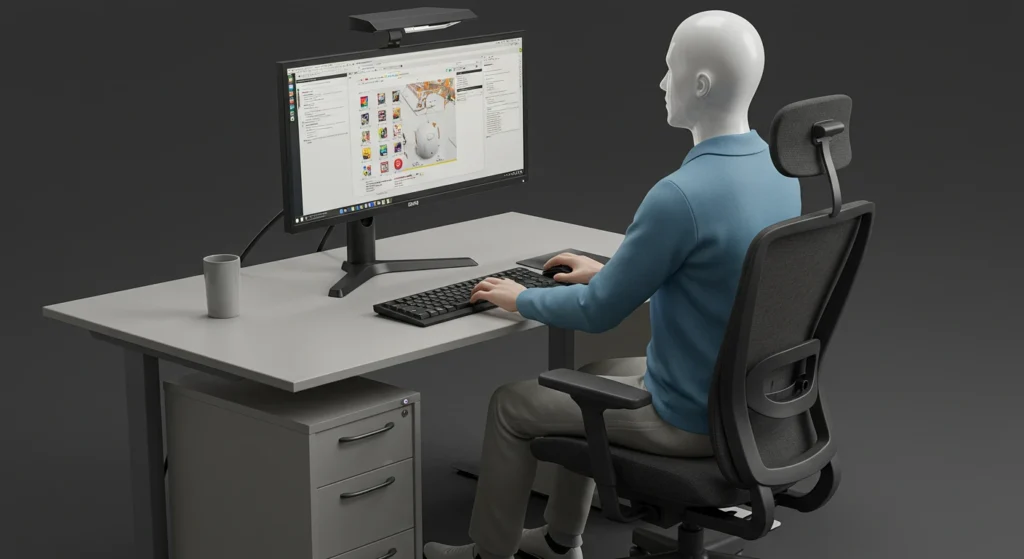
Rounded Shoulders
This often accompanies forward head posture and is characterized by shoulders that roll forward, creating a hunched appearance.
Primary causes include:
- Extended computer use
- Poor ergonomics at workstations
- Muscular imbalances (tight chest muscles, weak upper back muscles)
- Carrying heavy bags on one shoulder
Increased Lumbar Lordosis (“Swayback”)
This postural deviation shows as an excessive inward curve of the lower back, often accompanied by a protruding abdomen.
Primary causes include:
- Pregnancy and postpartum changes
- Weak core muscles
- Tight hip flexors from prolonged sitting
- High-heeled shoes worn regularly
One client with severe swayback benefited tremendously from myofascial release therapy combined with specific exercises to address her unique pattern of muscle imbalances.
Flat Back Posture
The opposite of swayback, flat back posture shows as reduced natural curvature in the spine, often leading to back pain and stiffness.
Primary causes include:
- Sitting for prolonged periods
- Muscular imbalances
- Certain conditions like ankylosing spondylitis
- Previous back surgeries or injuries
How to Assess Your Posture
Before you can improve your posture, you need to know what you’re working with! Here’s a simple self-assessment I recommend to clients:
The Wall Test
- Stand with your back against a wall, heels about 2-3 inches from the baseboard
- Make contact with the wall with your buttocks and shoulder blades
- Check the distance between your neck and the wall-ideally, you should be able to slide your flat hand into this space
- Notice if your head touches the wall naturally or if you have to strain to make it touch
Another effective check is the mirror test. Stand sideways to a full-length mirror and observe your alignment. Ideally, you should be able to draw an imaginary straight line from your earlobe through your shoulder, hip, knee, and ankle.
For those with more serious concerns, I often recommend a professional posture assessment. As someone who provides this service, I use more precise tools including postural grids and specialized software to identify specific deviations.
Effective Strategies to Improve Your Posture
After years of helping clients transform their alignment, I’ve developed a comprehensive approach to posture correction that works wonders. Here are my top strategies:
Targeted Exercises and Stretches
For Forward Head Posture and Rounded Shoulders:
- Chin Tucks: While sitting upright, draw your chin straight back (creating a “double chin”). Hold for 5 seconds, repeat 10 times, several times daily.
- Wall Angels: Stand with your back against a wall, arms at 90 degrees with elbows and backs of hands touching the wall. Slowly slide arms up and down while maintaining contact.
- Doorway Chest Stretch: Stand in a doorway with arms at 90 degrees, elbows at shoulder height. Step forward with one foot while keeping hands on the doorframe until you feel a gentle stretch across the chest.
For Core Stability:
- Planks: Start with short holds (10-15 seconds) and gradually increase. Focus on proper form rather than duration.
- Bird-Dogs: On hands and knees, extend opposite arm and leg while maintaining a neutral spine. Hold for 5 seconds before switching sides.
- Bridges: Lie on your back with knees bent, feet flat. Lift hips toward ceiling while engaging glutes. Hold briefly before lowering.
For Lower Body Balance:
- Hip Flexor Stretches: In a lunge position with back knee on ground, gently press hips forward until you feel a stretch in the front of your hip.
- Glute Bridges: Similar to regular bridges but with added focus on squeezing glutes at the top of the movement.
For clients with significant imbalances, I often recommend a personalized program that addresses their specific needs. One client with severe forward head posture saw dramatic improvements with a combination of chin tucks, wall angels, and regular massage for shoulder pain.
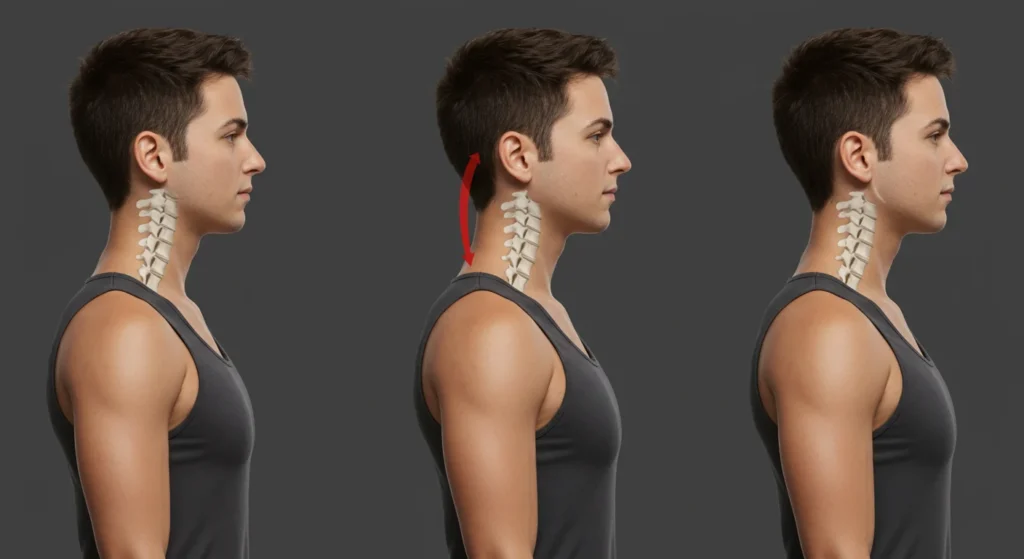
Ergonomic Adjustments
Your environment plays a crucial role in supporting good posture. My top recommendations include:
- Adjustable Chair: Invest in a chair that supports your lower back and allows your feet to rest flat on the floor.
- Monitor Height: The top of your monitor should be at or slightly below eye level to prevent neck strain.
- Phone Habits: Use speakerphone or headsets instead of cradling the phone between ear and shoulder.
- Standing Desk: Consider a sit-stand desk that allows you to alternate between sitting and standing throughout the day.
- Proper Bed Support: Ensure your mattress and pillow properly support your spine during sleep.
Mindfulness and Awareness
Developing postural awareness is perhaps the most important long-term strategy. I teach my clients several mindfulness techniques:
- Posture Check Reminders: Set regular reminders to check your posture throughout the day.
- Body Scanning: Take a moment several times daily to mentally scan your body for tension or misalignment.
- Breathing Focus: Use deep breathing as a cue to reset your posture.
- Visual Cues: Place small stickers or objects in your environment as reminders to check your posture.
One clever trick I recommend is the “string technique”-imagine a string pulling upward from the crown of your head, lengthening your spine and aligning your body. This simple visualization works wonders for immediate posture correction.
The Impact of Professional Support
While self-correction strategies are valuable, sometimes professional intervention makes all the difference. Here’s when and how to seek professional support:
Massage Therapy
As a massage therapist, I’ve seen remarkable postural improvements through targeted bodywork. Different techniques offer specific benefits:
- Swedish Massage: Relieves general tension that may be contributing to poor posture patterns. Learn more about Swedish massage benefits.
- Deep Tissue Massage: Addresses chronic muscle tension and adhesions that restrict movement and contribute to postural deviations.
- Myofascial Release: Targets restrictions in connective tissue that may be pulling the body out of alignment. This technique can be life-changing for chronic postural issues-learn about myofascial release therapy.
- Neuromuscular Therapy: Focuses on trigger points that may be contributing to pain and postural compensations. For more information, check out what is neuromuscular massage therapy.
Physical Therapy
Physical therapists specialize in movement analysis and can provide customized exercise programs to address your specific postural issues. They often use physical therapy massage tools and techniques that complement traditional exercise approaches.
Chiropractic Care
For some clients, chiropractic adjustments provide valuable support for postural improvement, particularly when structural issues affect spinal alignment.
Movement Education
Specialized approaches like the Alexander Technique, Feldenkrais Method, or yoga can develop greater body awareness and movement efficiency. These methods teach principles that extend beyond specific exercises to enhance your overall approach to movement.
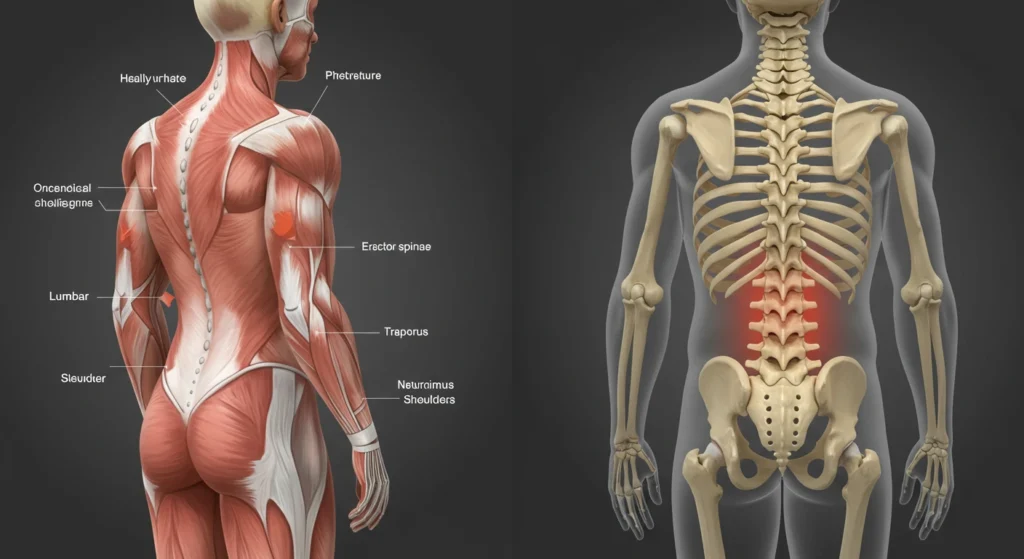
Comparing Postural Approaches: Finding What Works for You
Different postural correction methods work better for different people. Here’s a comparative look at popular approaches:
| Approach | Best For | Time Commitment | Cost | Professional Support Needed |
|---|---|---|---|---|
| Exercise-Based Correction | Active individuals with mild to moderate issues | 10-15 minutes daily | Low to none | Minimal (can learn from online resources) |
| Ergonomic Adjustments | Office workers, remote workers | One-time setup, regular adjustments | Moderate to high | Minimal (though ergonomic assessment can help) |
| Massage Therapy | Those with chronic tension patterns | 1-2 sessions monthly | Moderate to high | Yes (professional massage therapist) |
| Physical Therapy | Specific postural pathologies, pain conditions | 2-3 sessions weekly for 4-8 weeks | High (may be covered by insurance) | Yes (licensed physical therapist) |
| Movement Education | Those seeking deeper understanding of movement patterns | Weekly classes or sessions | Moderate to high | Yes (certified instructor) |
| Mindfulness Approaches | Everyone as supplementary practice | Brief moments throughout day | Low to none | Optional |
I personally find that a combination approach works best for most clients-using targeted exercises, ergonomic adjustments, and periodic professional bodywork like massage for shoulder pain or Swedish massage.
Daily Habits That Support Good Posture
Beyond formal exercises and professional interventions, daily habits make a tremendous difference in posture over time. Here are my top recommendations:
Movement Variety
Our bodies aren’t designed to maintain any single position for extended periods. Regularly changing positions and incorporating movement breaks helps prevent stagnation and the development of unhelpful posture patterns.
I recommend the 20-20-20 rule: every 20 minutes, spend 20 seconds looking at something 20 feet away and take that opportunity to shift your position.
Strengthening Your Core
A strong core provides the foundation for good posture. Beyond traditional exercises, look for ways to engage your core throughout daily activities:
- Stand on one foot while brushing teeth
- Practice “bracing” your core while waiting in line
- Sit on an exercise ball instead of a chair for short periods
Carrying and Lifting Properly
How you lift and carry items significantly impacts your posture. Always:
- Bend from the knees, not the waist
- Hold heavy items close to your body
- Distribute weight evenly (use backpacks instead of shoulder bags)
- Avoid twisting while lifting
Choosing Supportive Footwear
Your feet form the foundation of your posture. I recommend:
- Minimal heel height
- Good arch support
- Proper fit (not too tight)
- Regular rotation between different shoes
I once had a client whose forward head posture improved significantly after switching from high heels to supportive flats for her office job-sometimes solutions can be surprisingly simple!
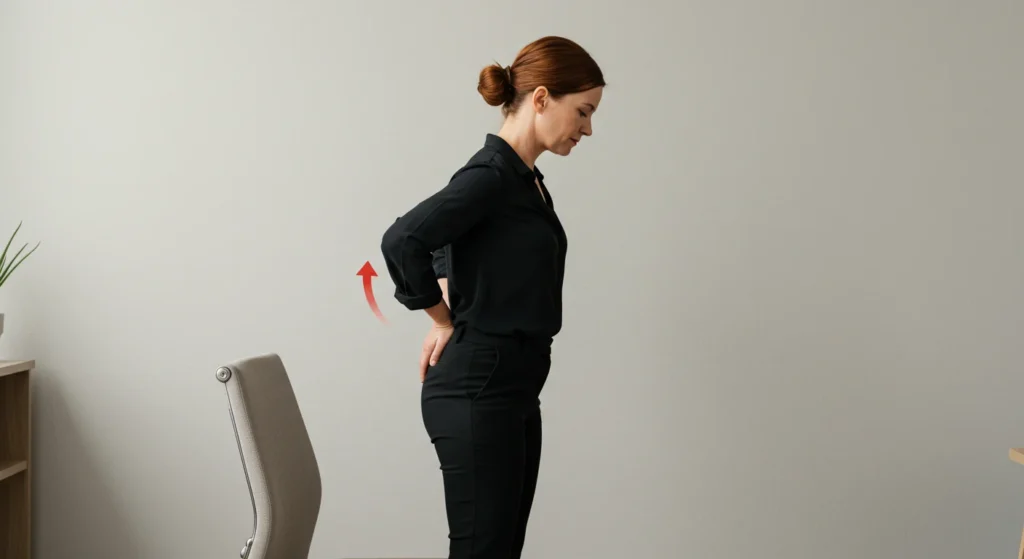
The Surprising Connection Between Posture and Emotional Health
One of the most fascinating aspects of my work has been observing the bidirectional relationship between posture and emotional wellbeing. This mind-body connection works in both directions:
- Emotions affect posture: When we’re feeling down, our posture tends to collapse. Anxiety often manifests as raised shoulders and shallow breathing.
- Posture affects emotions: Research shows that adopting an upright, open posture actually changes your biochemistry, boosting confidence and improving mood.
I’ve witnessed remarkable transformations in clients who incorporate what I call “power posing” into their daily routines-standing in confident, expansive postures for just two minutes can increase testosterone (the confidence hormone) and decrease cortisol (the stress hormone).
One client struggling with job interview anxiety practiced power posing in the bathroom before interviews. She reported not only feeling more confident but actually securing better job offers after incorporating this practice!
For those dealing with depression or anxiety, I often recommend working with both mental health professionals and bodyworkers who understand the connection between posture and mental health. The combination can be particularly effective.
Special Considerations for Different Life Stages
Posture needs evolve throughout life. Here are considerations for different age groups:
Children and Teens
With increasing technology use, I’m seeing more young clients with posture issues. For this age group, I recommend:
- Regular posture checks, especially during homework and device use
- Backpack weight not exceeding 10-15% of body weight
- Regular physical activity that builds core strength
- Limiting screen time and encouraging varied activities
Teenagers particularly benefit from massage therapy for teenagers which can address early postural issues before they become ingrained patterns.
Pregnancy and Postpartum
Pregnant and postpartum women face unique postural challenges. Recommendations include:
- Pregnancy-safe core strengthening
- Proper support during sleep
- Regular postural awareness checks
- Gentle stretching for tight areas
- Specialized prenatal massage
Older Adults
For seniors, I focus on:
- Balance exercises to prevent falls
- Gentle strengthening for postural muscles
- Modifications for existing conditions
- Assistive devices when appropriate
- Regular bodywork to maintain mobility
Many of my older clients benefit tremendously from massage therapy for trauma that addresses both physical and emotional aspects of long-term postural patterns.
Common Myths About Posture
Let me clear up some misconceptions I frequently encounter:
Myth 1: “Perfect posture means sitting/standing straight all the time”
Reality: Good posture isn’t rigid or static! It’s dynamic and should feel comfortable. The best posture is the next posture-meaning regular position changes are crucial.
Myth 2: “I can fix my posture with a device or brace”
Reality: While posture supports can help in specific situations, they often weaken the very muscles needed for long-term improvement. They’re best used as temporary reminders rather than permanent solutions.
Myth 3: “It’s too late to fix my posture”
Reality: It’s never too late! While longer-standing patterns may take more time to address, I’ve worked with clients in their 80s who made significant improvements. The body has remarkable capacity for change at any age.
Myth 4: “Exercise alone will fix my posture”
Reality: General fitness is important but doesn’t automatically correct postural issues. Targeted exercises that address your specific imbalances are much more effective.
Myth 5: “Good posture feels uncomfortable at first because I’m not used to it”
Reality: While minor muscular fatigue may occur as you adapt, good posture should never cause pain or significant discomfort. If it does, you may be overcorrecting or forcing an unnatural position.
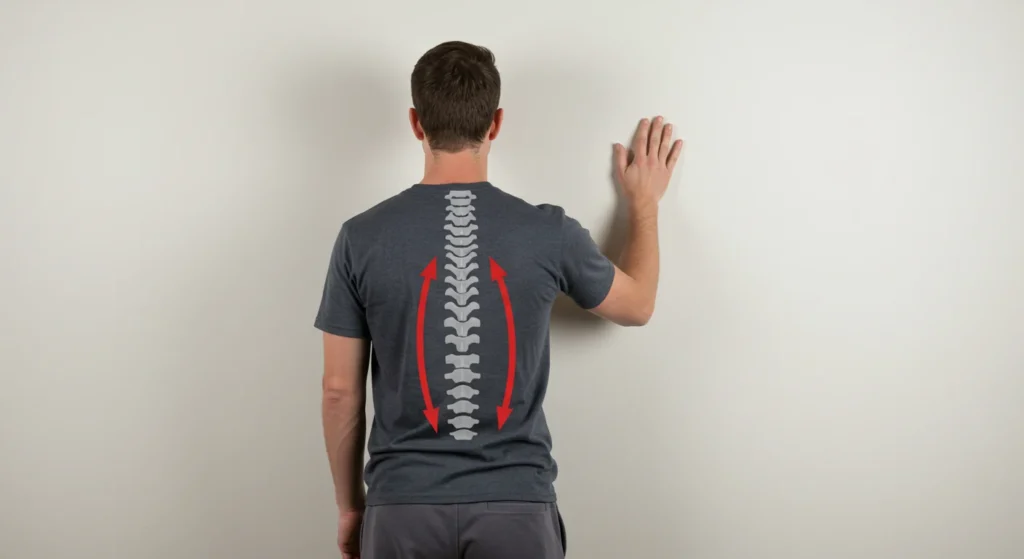
Posture & Health – Evidence & Practical Guide
Why posture impacts everything
- Pain reduction – proper alignment cuts spinal stress by 50 % + prevents compensatory patterns.
- Breathing ↑ – upright posture allows 30 % more lung expansion vs slouched position.
- Confidence boost – erect posture increases testosterone 20 %, drops cortisol 25 %.
- Balance stability – good alignment prevents falls & improves proprioception.
- Mood enhancement – upright postures speed emotional recovery from negative states.
Common postural problems & quick fixes
| Problem | Main Cause | Key Exercise | Daily Habit |
|---|---|---|---|
| Forward Head | Screen time, phone use | Chin tucks 10×, 3×/day | Screen at eye level |
| Rounded Shoulders | Computer work, tight chest | Wall angels 10×, doorway stretch | Backpack vs shoulder bag |
| Swayback | Weak core, tight hip flexors | Planks + hip flexor stretch | Supportive footwear |
| Flat Back | Prolonged sitting | Cat-cow, glute bridges | Movement breaks q20min |
Quick posture self-assessment
- Wall test: Stand against wall—head, shoulders, buttocks touch naturally?
- Mirror test: Side view—ear over shoulder over hip over ankle?
- Photo check: Have someone snap side-view pics in natural stance.
Daily improvement toolkit
- 20-20-20 rule: q20min look 20ft away for 20s + posture reset.
- String visualisation: imagine upward pull from crown of head.
- Core engagement: practice “bracing” during daily activities.
- Movement variety: alternate sitting/standing, change positions often.
Professional support options
- Massage therapy: releases compensatory tension, realigns soft tissue.
- Physical therapy: targeted exercise programs, movement re-education.
- Ergonomic assessment: workspace optimisation for better alignment.
- Movement classes: Alexander Technique, Feldenkrais, corrective yoga.
Conclusion: The Lifelong Posture Journey
After years of helping clients transform their posture-and working on my own alignment daily-I’ve come to see posture not as a fixed destination but as an ongoing practice that evolves throughout life.
Good posture isn’t about perfection; it’s about awareness and balance. It’s about treating your body with respect and understanding its design. The benefits extend far beyond aesthetics into every aspect of physical health, emotional wellbeing, and daily function.
Whether you’re dealing with chronic pain, seeking to improve athletic performance, or simply want to feel more confident and energized, investing in your posture delivers remarkable returns. It’s truly one of the most accessible and impactful ways to enhance your quality of life.
I encourage you to start with small, consistent changes. Notice how your body feels in different positions. Develop awareness of your patterns. Seek professional guidance when needed. Your body will thank you with greater comfort, improved function, and perhaps most importantly, the freedom to fully engage in the activities you love.
Remember: Your posture tells a story about your past, but it doesn’t have to determine your future. With awareness, consistency, and the right support, you can write a new postural narrative-one of balance, strength, and vitality.
- Perimenopause Massage Protocols: Hormone-Balancing Touch Techniques for Women 40+
- Crystal Massage Therapy Certification: Market Demand and Professional Integration
- Sound Healing During Massage: Frequency Therapy Benefits and Equipment Guide
- Reiki-Infused Massage Therapy: The New Wellness Trend Taking Over Spas
- TRICARE Massage Therapy Coverage for Military Families: What You Need to Know

